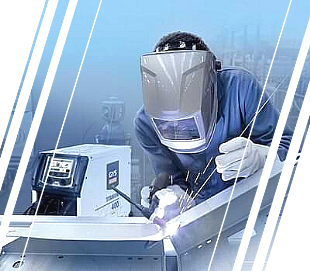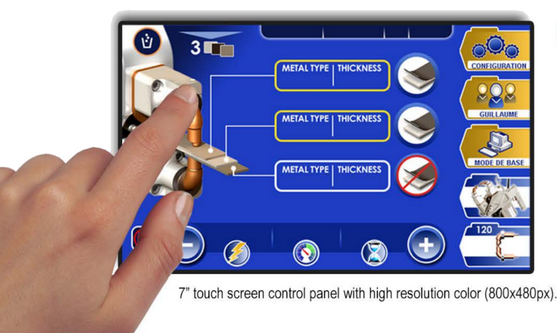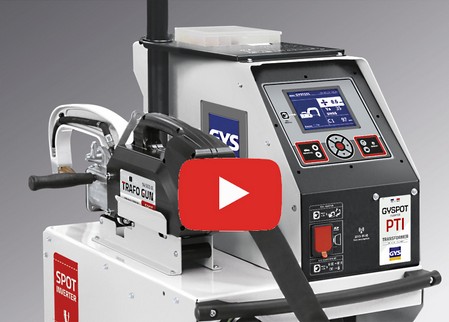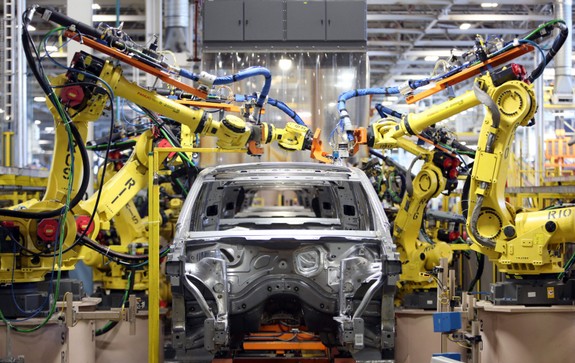Process, Applications, and Main Advantages of Spot Welding In 2023
Published by Pro Line Systems in Informational · 2 November 2022
Tags: Main, Advantages, of, Auto, Body, Spot, Welding, In, 2023, GYS, Spot, Welder, Pro, Line, Systems
Tags: Main, Advantages, of, Auto, Body, Spot, Welding, In, 2023, GYS, Spot, Welder, Pro, Line, Systems
In this Article: Learn about how spot welding is used in many diverse industries and why it has become the best process for manufacturing anything made of steel.
Process, Applications, and Main Advantages of Spot Welding
Innovation and efficiency are vital in every phase of current industrial life. Welding is one of the most critical processes in metal manufacturing, and spot welding is among the most efficient techniques, although it is relatively old. What is spot welding, and how does it operate? Spot welding, a quick manufacturing method, will be described in the following text.
What Is Spot Welding?
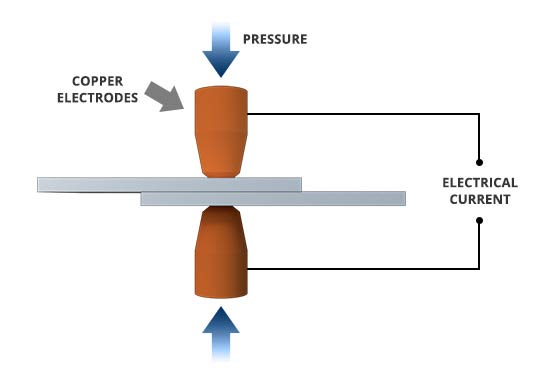
Spot welding is one method of joining two metal pieces through pressure and heat with the assistance of an electrical current. Using concentrated current to eliminate resistance from the spot and facilitate the fusion process, spot welding is the best technique for joining thin sheets.
When it comes to the most common applications of the spot-welding process, automobile design takes the most significant share as it demands higher flexibility and durability in the weld. Copper electrodes are the most common choice for welding as they have better thermal conductivity and electrical resistance.
Today, the industry continues to innovate the welding process with the addition of robots on the assembly line. This results in an even more significant increase in the overall efficiency and speed of the welding process, further increasing the widespread popularity and application of resistance spot welding.
How Does Spot Welding Work?
Spot welding is a straightforward procedure in which a high-voltage current is concentrated on a small area under pressure. The electric current is strong enough to fuse the metal and begin the fusion process instantly. Alignment is critical in this process. If the workpieces are not correctly aligned, the product will be defective, and the material will be wasted. Pressure is another vital factor that impacts weld quality. If there is too little pressure, the base material will be damaged. It must be just right to ensure excellent weld quality, or there will be substandard welds.
Spot welding processes consist of three basic steps. Anything else used in the industry today is an additional step to maintaining consistent quality and standards. Here is a description of the three basic steps involved in spot welding.
Step 1: Alignment of the Workpieces
It is essential to align the workpieces as precisely as possible before the welding process to ensure no going back to the previous state. Doing so would save time and resources and ensure consistent results.
Step 2: Apply Pressure
Spot welding is created by applying both heat and pressure using electric current. This method ensures that workpieces do not have material defects such as unwanted reactions or delaminations. Pure refractory copper electrodes are the best for spot welding because they resist heat and don't oxidize even under pressure.
Step 3: Allow the flow of the Current
After selecting the pressure and position of the electrodes, the final step is to initiate the current. The current's time and intensity depend on the two workpieces' overall thickness. After the fusion, the current is turned off, but the pressure remains the same, allowing the workpieces to join correctly. Typically, a leg pedal for industrial machines or C & G compression clamps as used in auto body repair shops, initiates the circuit and allows it to flow, focusing on a single point and causing it to melt.

You Might Like: Auto Body Spot Welders for Collision Repair
Ensure that the spot welds are of high quality by following these tips.
Every spot welding process with a resistance / inverter machine must provide quality and consistency of welds which depends on many variables, starting from but not limited to the following. The parameters listed below are the most fundamental ones in every situation. However, the actual crucial variables are determined by the requirements and intricacies of the specific project.
Convenient Electrodes Forces
The welds require a certain amount of energy to fuse two metals. The more force there is, the more electrical and thermal energy dissipation will result. Too much thermal energy can significantly impact weld quality, so care should be taken.
It's also essential to understand that the spatter generated by electrode forces results from the combination of current and pressure. The primary purpose of electrode forces is to generate a spatter; therefore, the correct combination of current and pressure must be used to avoid them. The correct combination is up to the engineer or individual working on the weld. You may use high current and low pressure to generate quick results with little regard for quality or low current and high pressure/hold time to generate extremely high-quality welds.
Modern Spot Welder Control Panel
Squeeze time should be extended.
More extended hold or squeeze times can help improve the weld's overall quality by allowing the workpiece to stabilize for a more extended period before the current is applied. Furthermore, the initial pressure also causes permanent deformation of the workpiece tips without heat, which is the most effective way to ensure quality and strength.
Having more squeeze time can improve weld quality, but there is a caveat! The costs may skyrocket if the operation requires fewer parts in a given timeframe because increasing the squeeze time can cause quality and production efficiency to suffer. To ensure that every parameter is correctly aligned with the project's overall requirements and provides the ideal mixture of quality and efficiency, the squeeze time must be appropriately balanced.
Short Weld Durations
Spot welding is characterized by just one rule: the weld time must be as low as possible to produce high-quality welds. Spot welding must be performed quickly to minimize the time as much as possible. Although the duration of a weld is not set in stone, the AHSS Guidelines suggest that a 1/5th-of-a-second duration is expected. Spot welding produces high-quality welds as long as the duration is kept as short as possible. However, if the duration is decreased excessively, the welds will not fuse properly, resulting in problems later. Other aspects, such as the distance between the welds, the required strength, and material characteristics, may affect the suitable time.
See Our GYSPOT PTI-S7 Smart Spot Welder
Appropriate Hold Time
The hold time refers to the total time the workpiece remains in contact with the electrodes after the current has been applied to allow the weld area to solidify. This time includes the time the current is applied to secure the workpiece in place to increase the overall quality of the joint. Increasing the hold time may maintain the pressure on the workpiece, resulting in increased weld quality.
However, if the hold time is increased excessively, it might result in several issues. The electrodes may be damaged as a result of the dissipated heat. The material and choice play a part as well. Brittle choices, such as some carbon steels, may develop cracks, leading to poor welds.
Typical Material Options for Spot welding
Many spot welding material options are available, and they don't have to be limited to pure metals. Alloys are also good choices in this area. Spot welds are typically used in the automotive sector because of their use in steel. In general, any metal alloy with high electrical resistance can be an excellent choice for spot welding.
Aluminum and galvanized steel are the most common non-compatible materials. Currents of high intensity are required to galvanize steel and aluminum, which may impede weld formation. In addition to the material, sheet metal thickness is also critical. The optimal sheet metal thickness is typically around three millimeters, which creates the best quality welds. For optimal results, the two sheets to be fused should be the same size or have a 3:1 size ratio in addition to that.
Spot Welding Is Used in Different Industries
Spot welding has diverse uses across various industries, but the following four industrial sectors benefit the most from this technique in producing high-quality products.
Automobile Industry - There is no doubt that the automobile sector has the most significant utilization of spot welding because a big portion of any car's body is composed of sheet metal. This process is economical, efficient, and does not require any sophisticated setup, making it among the most suitable processes for automation.
Electronics Industry - Spot welding is used to produce circuit boards, gas sensors, and solar panels, among other things, because it ensures quality and efficiency in production. Furthermore, this welding technique is suitable for the most sophisticated electrical components with intricate details because the weld stays on a single point and leaves plenty of room for other processes and functions.
Manufacturing Batteries - Given the previous discussion, spot welding is the perfect choice for assembling batteries. Batteries have numerous interconnected terminals, and sheet metals are employed to divide them.
Nails Creation - Automating the welding process produces faster nails than a pneumatic nail gun, making spot welds excellent for nail creation.
Benefits of Spot Welding
Spot welds are the most popular for automobile construction because they offer excellent performance and good looks. This balance is one of the most significant advantages of arc welding, which distinguishes it from other processes, such as TIG and MIG welding.
Spot welds can provide some advantages if you decide to join sheet metal:
- This method is fast, clean, and requires little post-processing.
- It works without any open flame and is dangerous and inefficient. It's a straightforward process that doesn't require much training.
- Robots can do spot welding on an assembly line because the process is simple.
- You can weld multiple metal sheets at one time.
- It is 100% pure.
- It is inexpensive and straightforward to manufacture because it does not require inert gases or filler metals.
Drawbacks of Spot Welding
Spot welds are successful because of several advantages but also some disadvantages. Here are some drawbacks that go against the spot-welding process.
- Even the slightest discrepancy between the parts can result in significant problems.
- Base metals may be permanently deformed during the process, affecting aesthetics.
- You cannot process thicker metal pieces than 3 mm.
- Spot welds are less intense than other types of welds.
- The pressure affects the quality; any deviation in pressure significantly diminishes the quality.
- After some time, the electrodes might need to be replaced due to thermal cracking.
For More Reading: What You Need To Know About Plastic Welding
Are you looking for an Auto Body Repair Equipment Supplier with an excellent reputation, products, and pricing?
Click here to get a quote.
If you have any questions or need advice or equipment pricing please give us a call at; 305-793-9503

